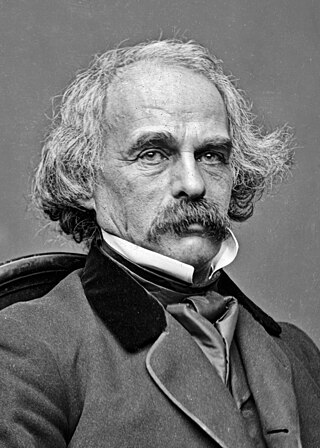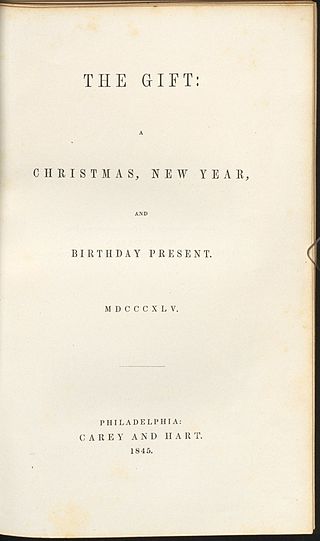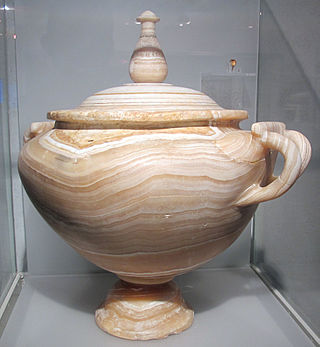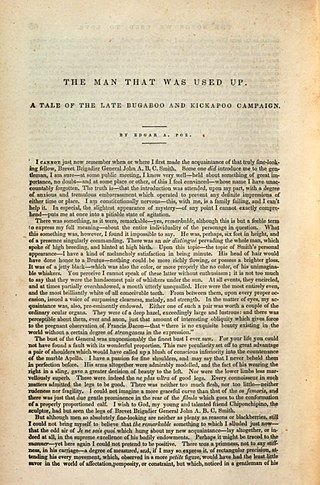
Moby-Dick; or, The Whale is an 1851 novel by American writer Herman Melville. The book is the sailor Ishmael's narrative of the maniacal quest of Ahab, captain of the whaling ship Pequod, for vengeance against Moby Dick, the giant white sperm whale that bit off his leg on the ship's previous voyage. A contribution to the literature of the American Renaissance, Moby-Dick was published to mixed reviews, was a commercial failure, and was out of print at the time of the author's death in 1891. Its reputation as a Great American Novel was established only in the 20th century, after the 1919 centennial of its author's birth. William Faulkner said he wished he had written the book himself, and D. H. Lawrence called it "one of the strangest and most wonderful books in the world" and "the greatest book of the sea ever written". Its opening sentence, "Call me Ishmael", is among world literature's most famous.

Nathaniel Hawthorne was an American novelist and short story writer. His works often focus on history, morality, and religion.

"A Descent into the Maelström" is an 1841 short story by American writer Edgar Allan Poe. In the tale, a man recounts how he survived a shipwreck and a whirlpool. It has been grouped with Poe's tales of ratiocination and also labeled an early form of science fiction.

"The Purloined Letter" is a short story by American author Edgar Allan Poe. It is the third of his three detective stories featuring the fictional C. Auguste Dupin, the other two being "The Murders in the Rue Morgue" and "The Mystery of Marie Rogêt". These stories are considered to be important early forerunners of the modern detective story. It first appeared in the literary annual The Gift for 1845 (1844) and soon was reprinted in numerous journals and newspapers.

Sir Thomas Browne was an English polymath and author of varied works which reveal his wide learning in diverse fields including science and medicine, religion and the esoteric. His writings display a deep curiosity towards the natural world, influenced by the Scientific Revolution of Baconian enquiry and are permeated by references to Classical and Biblical sources as well as the idiosyncrasies of his own personality. Although often described as suffused with melancholia, Browne's writings are also characterised by wit and subtle humour, while his literary style is varied, according to genre, resulting in a rich, unique prose which ranges from rough notebook observations to polished Baroque eloquence.

A quincunx is a geometric pattern consisting of five points arranged in a cross, with four of them forming a square or rectangle and a fifth at its center. The same pattern has other names, including "in saltire" or "in cross" in heraldry, the five-point stencil in numerical analysis, and the five dots tattoo. It forms the arrangement of five units in the pattern corresponding to the five-spot on six-sided dice, playing cards, and dominoes. It is represented in Unicode as U+2059⁙FIVE DOT PUNCTUATION or U+2684⚄DIE FACE-5.
This article contains information about the literary events and publications of 1850.
This article contains information about the literary events and publications of 1841.

Alain-René Lesage was a French novelist and playwright. Lesage is best known for his comic novel The Devil upon Two Sticks, his comedy Turcaret (1709), and his picaresque novel Gil Blas (1715–1735).

In literature, an epigraph is a phrase, quotation, or poem that is set at the beginning of a document, monograph or section or chapter thereof. The epigraph may serve as a preface to the work; as a summary; as a counter-example; or as a link from the work to a wider literary canon, with the purpose of either inviting comparison or enlisting a conventional context.

Le ChevalierC. Auguste Dupin is a fictional character created by Edgar Allan Poe. Dupin made his first appearance in Poe's 1841 short story "The Murders in the Rue Morgue", widely considered the first detective fiction story. He reappears in "The Mystery of Marie Rogêt" (1842) and "The Purloined Letter" (1844).

An urn is a vase, often with a cover, with a typically narrowed neck above a rounded body and a footed pedestal. Describing a vessel as an "urn", as opposed to a vase or other terms, generally reflects its use rather than any particular shape or origin. The term is especially often used for funerary urns, vessels used in burials, either to hold the cremated ashes or as grave goods, but is used in many other contexts.

Edwin Percy Whipple was an American essayist and critic.

The Rings of Saturn is a 1995 novel by the German writer W. G. Sebald. Its first-person narrative arc is the account by a nameless narrator on a walking tour of Suffolk. In addition to describing the places he sees and people he encounters, including translator Michael Hamburger, Sebald discusses various episodes of history and literature, including the introduction of silkworm cultivation to Europe, and the writings of Thomas Browne, which attach in some way to the larger text. The book was published in English in 1998.

American poet and short story writer Edgar Allan Poe has had significant influence in television and film. Many are adaptations of Poe's work, others merely reference it.

"The Man That Was Used Up", sometimes subtitled "A Tale of the Late Bugaboo and Kickapoo Campaign", is a short story and satire by Edgar Allan Poe. It was first published in August 1839 in Burton's Gentleman's Magazine.
Decasyllabic quatrain is a poetic form in which each stanza consists of four lines of ten syllables each, usually with a rhyme scheme of AABB or ABAB. Examples of the decasyllabic quatrain in heroic couplets appear in some of the earliest texts in the English language, as Geoffrey Chaucer created the heroic couplet and used it in The Canterbury Tales. The alternating form came to prominence in late 16th-century English poetry and became fashionable in the 17th century when it appeared in heroic poems by William Davenant and John Dryden. In the 18th century famous poets such as Thomas Gray continued to use the form in works such as "Elegy Written in a Country Churchyard". Shakespearean Sonnets, comprising 3 quatrains of iambic pentameter followed by a final couplet, as well as later poems in blank verse have displayed the various uses of the decasyllabic quatrain throughout the history of English Poetry.

Miklós Szentkuthy was one of the most prolific Hungarian writers of the 20th century. His works include numerous novels, essays, translations, and a voluminous diary spanning the years 1930–1988. As the author of masterpieces such as Prae, the epic 10-volume St. Orpheus Breviary, Chapter on Love and Towards the One and Only Metaphor, he is recognized as one of the most significant Hungarian writers of the 20th century. To date, his works have been translated into English, French, Spanish, Portuguese, Romanian, Slovak, and Turkish.
Merton M. Sealts Jr. was a scholar of American literature, focusing on Ralph Waldo Emerson and Herman Melville. His most important works are the genetic edition of Melville's Billy Budd, Sailor, Pursuing Melville, 1940–1980 (1982) and Melville's Reading. He taught at Lawrence College (1948–1965), and became Henry A. Pochmann Professor of English at the University of Wisconsin–Madison (1965-1982). He won both Ford Foundation and Guggenheim fellowships.

Jeffrey Andrew Weinstock is an American literature, film, and media scholar who has been teaching in the Department of English Language and Literature at Central Michigan University since 2001. He has authored or edited twenty-nine books and a range of articles focusing on the American Gothic tradition, monsters, cult film and television, popular culture, weird fiction, pedagogy, and goth music. He is the associate editor in charge of horror for the Los Angeles Review of Books.
















